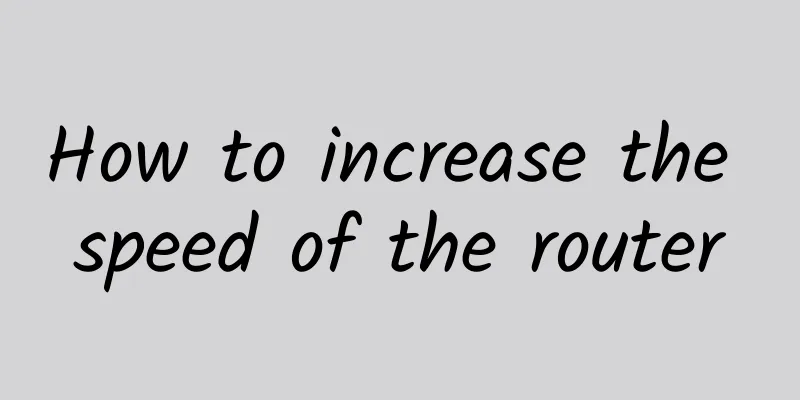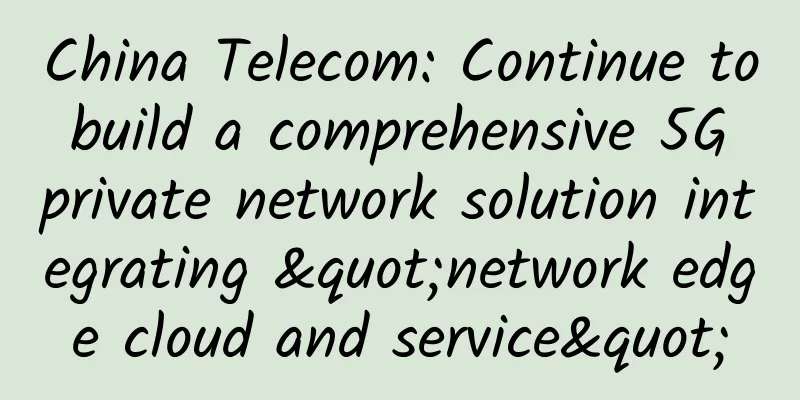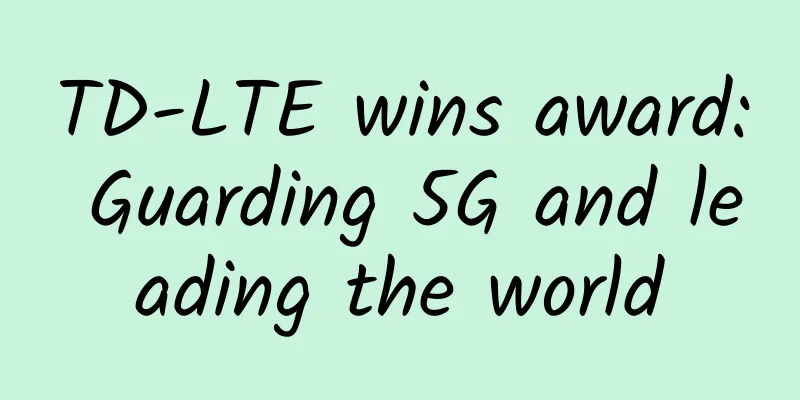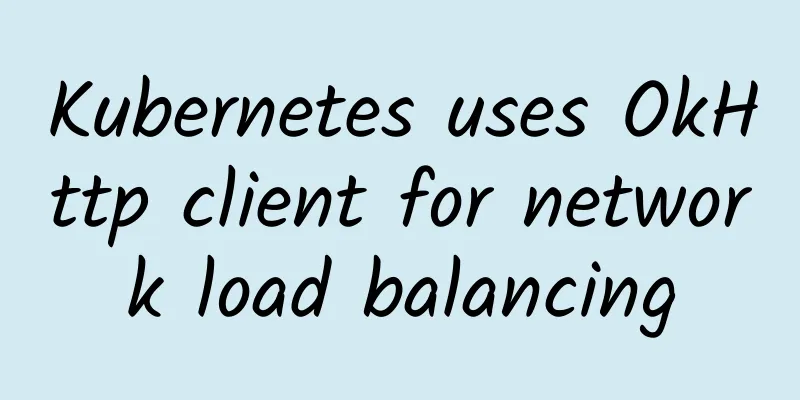All in one article: 20 industries that 5G can change

|
The 5G era is coming. What new changes will it bring to people's financial services and daily life? Here, we compiled the CB insights article "20 Industries That 5G Can Change", hoping to help more clearly show the complete picture of digital technology in the 5G era fully empowering the real economy and smart life.
Under 5G network, the data transmission speed will be significantly faster - 1Gbps under 4G network, and it can be increased to 10Gbps in the future. Therefore, 5G will bring huge opportunities to all walks of life, but it also means great disruption. In general, the following industries will seize the first opportunity in the 5G dividend: 1. Manufacturing 5G technology can help improve safety while making production more flexible and efficient. It makes the "smart factory" with automation, artificial intelligence, augmented reality and the Internet of Things as core technologies a reality. Take AR as an example. 5G's high bandwidth and low latency can maintain its image quality. In factories, this means AR can be used to assist in training and maintenance. An Ericsson factory has adopted AR technology to troubleshoot faults, shorten downtime and reduce the costs of equipment failures. It is said that this has increased productivity by 50%. 2. Energy 5G is considered the key to the arrival of the next generation of "smart grid" wave. With more interconnected smart grids, peak electricity consumption and overall energy consumption will be reduced, and energy management will be more efficient. 5G can also greatly increase the lifespan of battery-powered equipment by up to 10 years, making it possible to use IoT sensors on a large scale in the energy industry. 3. Agriculture 5G can significantly increase the usage rate of IoT devices, allowing farmers around the world to rely on IoT technology to optimize the entire agricultural production process, including watering, fertilization, livestock monitoring, etc. 5G can provide real-time data to help farmers monitor, track, and automate their agricultural systems, improve efficiency, increase income, and bring about a significant increase in safety. In a high-risk industry like agriculture, such improvements in production accuracy are crucial, especially in the new environment caused by climate change. 4. Retail 5G can make VR fitting rooms, AR shopping experiences, etc. possible. 5G's low latency means that the motion sickness that people may experience nowadays will no longer exist, and people can "try on clothes" comfortably at home. 5. Finance Financial institutions are increasingly focusing on mobile operations, and 5G technology accelerates the digitization of everything from internal processes to external customer service. At the same time, 5G's high speed allows users to make instant payments on their devices. 5G can also help wearable devices share users' biometric information with financial institutions, thereby helping them to quickly and accurately verify user identities. 6. Media and entertainment industry 5G's low latency will make watching videos less "stuttering". Under 5G networks, the time it takes to download a movie will drop from an average of 7 minutes to just 6 seconds. When it comes to browsing social media, playing games, listening to music, downloading videos, etc., 5G is expected to save users an average of 23 hours of loading time per month. Widespread use of AR/VR will also provide content producers with new channels to reach users. With 5G, people can connect with media in a variety of ways and through virtual characters. According to Ovum research, new services and applications enabled by 5G will bring a total of US$765 billion in dazzling growth to the global media industry. 7. Healthcare The healthcare system needs faster and more efficient network coverage to handle the massive amounts of data it processes, including detailed patient information, clinical research, and high-resolution MRI & CT images. 5G can also remotely monitor enabled devices such as wearable technology, helping them transmit patient data to doctors in real time. Remote surgery can also make progress with the help of 5G. These remote surgeries require high-resolution image streaming, so large amounts of data and low latency are critical. 8. Transportation 5G can enhance communication between vehicles, which is an important practice to improve road safety after the emergence of driverless cars. It is important to note that milliseconds may be the difference between a near-crash and a fatal disaster. 5G can also make it possible for vehicles to interact with infrastructure, including traffic lights, bus stops, and even roads themselves. This can improve traffic flow and make the entire public transportation system more efficient. 9. AR/VR AR/VR requires a lot of data processing support. If the network is unstable and has delays, it will ruin the entire immersive experience and may even cause physical discomfort to users. However, with the ability to reduce delays to 1/10 of the previous level and increase network efficiency by 100 times, 5G can help solve this problem. 10. Insurance With more effective data sharing, the underwriting information of health life insurance companies can be more informed and accurate, thus assisting decision-making. As 5G-enabled wearable medical and health devices become more popular, insurance companies can adopt positive incentive policies - if the insured maintains a certain level of health indicators, the insurance premium can be reduced accordingly. In the new era of driverless cars led by 5G, if a car accident occurs, data reports can be sent to insurance companies in real time. 11. Education As 5G paves the way for better AR/VR experiences, teachers can use these technologies to create new educational experiences. For example, students can use virtual reality to explore wonders around the world. These VR learning experiences may be particularly useful for students in high-risk fields such as medicine and aviation. Compared with traditional education, AR/VR-enabled education platforms have many benefits - cost-effectiveness and low risk. A study found that after receiving VR training, medical staff remembered 80% of the learning content, while they could only remember 20% in traditional courses. 12. Cloud computing Cloud applications are often downplayed due to low throughput, high latency, and inconsistency on mobile devices. However, this will change drastically with 5G, which will make it easier for mobile devices to interact with central servers. 5G could make cloud computing comparable to connections between corporate LANs and desktops. 13. Games 5G can solve the current latency issues faced by cloud-based gaming, reducing latency from 10 milliseconds on 4G to 1-2 milliseconds. This technology will benefit those who play multiplayer games on their phones. Video game streaming services have received a bad rap for their high costs and choppy gaming experiences. 5G could improve quality and make them more cost-effective. 14. Real Estate Potential buyers can use virtual reality to view a variety of homes without leaving the real estate agent's office. VR tours via mobile apps will be very useful for those looking to buy or rent a property in a different state or country, where individuals can virtually tour the resort they wish to rent before booking. 15. Public Safety With the help of 5G networks, services such as real-time video, secure communications, and media sharing can be provided in emergency situations to shorten emergency response times. Firefighters can use AR to help them cross houses when they cannot see the scene clearly. 5G networks can enable secure and reliable video sharing through body cameras, drones, group chats, file sharing, and location sharing. After a disaster, 5G-enabled drones can also deliver relief supplies and help find missing people. 16. Supply Chain Management Installing 5G-enabled IoT sensors on products can easily provide massive amounts of real-time data for every link in the supply chain. This includes information such as location, temperature, humidity, pressure, etc., which is crucial for the proper management of circulating products in the supply chain. Introducing 5G IoT sensors into the supply chain will reduce losses caused by inefficient labor or misplaced containers. With 5G technology enabling smarter supply chain management services, increased production, simplified logistics processes, and reduced costs will all be achieved. 17. Food and Beverage The way restaurants interact with customers and prepare and serve food will continue to advance, and robots are likely to become more widespread. 5G-enabled IoT devices can improve food tracking and waste disposal. At the same time, 5G's high speed and low latency can transform ordering platforms into a more immersive interactive experience. 18. Travel 5G is providing the wireless infrastructure for “smart tourism,” which attracts more visitors to tourist attractions and provides more immersive experiences. Ericsson has partnered with Rostelecom, Russia’s leading telecom operator, to deploy a 5G trial network at the Hermitage Museum in St. Petersburg, the world’s largest art museum, which will not only improve the museum visit experience but also reshape art through remote-controlled robots. 19. Military 5G technology can minimize data transmission speeds, delivering information in life-threatening situations with less confusion and delays, which could help slow casualties in war zones. 5G means better data collection, which can help the military clearly understand spending and resource utilization and assist in budget decision-making. 20. Marketing and Advertising 5G can play a key role in transforming advertising displays into social immersive experiences, bringing content and audiences closer together. It can also help companies overcome the scale and delivery challenges they face when handling mobile advertising campaigns. 5G can help marketing and advertising transition from “banner-based ads” to moving images and videos. It can also measure advertising effectiveness in real time through eye tracking and biometrics. |
Recommend
Is predictive maintenance the shortest path for edge computing and artificial intelligence to be implemented in industry?
My previous article, "Once considered the &q...
CMIVPS 3rd Anniversary Event: 50% off on all VPS hosts with limited annual payment
A few days ago, we shared CMIVPS's regular pr...
Is it OK to leave the router on for a long time? Is there any harm if I don't turn it off?
Some people say that WIFI is the vitamin of the I...
Python practice: Create an efficient multi-process TCP server to easily handle concurrent requests!
This article introduces how to use Python to impl...
How does the TCP connection state change?
TCP is a connection-oriented reliable transmissio...
Understanding the differences and application scenarios of TCP and UDP protocols in one article
[[276674]] TCP (Transmission Control Protocol) an...
One minute to show you: the complete process from entering a URL to displaying the page
Preface: Do you really understand your daily Inte...
Understanding TCP/IP protocol stack HTTP2.0
[[332931]] 1 Introduction Today, let's study ...
5G brings three values to promote intelligent mining
At present, under the long-term goal of carbon ne...
Latest version of Riverbed SteelCentral performance monitoring platform released
Riverbed Technology recently announced that the l...
Learn about server network cards in one minute
I have already introduced to you what a server is...
[Black Friday] DediPath: Dedicated servers in multiple data centers in San Jose/Los Angeles/New York/Dallas starting from $39/month
A few days ago, we shared the Black Friday VPS pr...
Jingwen Internet's year-end special offer: 30% off on all VPS + free memory, 200 yuan off for independent servers, 300 yuan for 1,000 yuan recharge
It has been exactly half a year since I last shar...
Network packet loss troubleshooting solution
1. Location and processing of network packet loss...
What are the new features of HTTP/2 compared to HTTP/1.1? How to solve head-of-line blocking and header compression?
[[398710]] This article is reprinted from the WeC...









